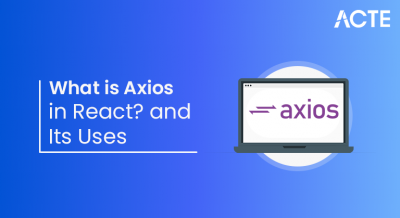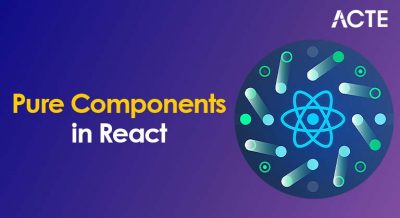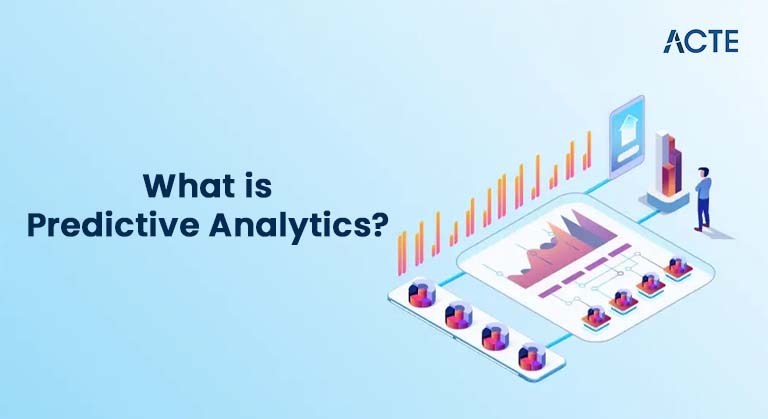
- What is Predictive Analytics?
- Importance in Business Decision Making
- Predictive Modeling Overview
- Regression Analysis
- Classification Techniques
- Time Series Forecasting
- Data Requirements & Preprocessing
- Tools Used (SAS, R, Python, RapidMiner)
- Applications in Industries (Finance, Healthcare, Retail
- Challenges and Limitations
- Predictive vs Descriptive Analytics
- Future of Predictive Analytics
What is Predictive Analytics?
What is Predictive analytics refers to the branch of advanced analytics that uses historical data, statistical algorithms, and machine learning techniques to identify the likelihood of future outcomes. Unlike traditional analytics that often focus on what has happened, predictive analytics aims to forecast what is likely to happen next, helping organizations anticipate trends and make informed decisions. To build the skills needed for this forward-looking approach, explore Data Science Training a comprehensive program that covers predictive modeling, machine learning, and statistical techniques to turn raw data into actionable foresight. At its core, predictive analytics combines data mining, statistics, modeling, and machine learning to analyze current and historical facts, thus enabling businesses to gain foresight into customer behavior, market trends, risk assessment, and other critical business factors.
Importance in Business Decision Making
Predictive analytics is a game-changer for businesses because it enables proactive, rather than reactive, decision making. Key benefits include improved forecasting accuracy, faster response times, and deeper insights from complex datasets. To enhance these outcomes by simplifying high-dimensional data, explore Dimensionality Reduction a focused guide that explains techniques like PCA and t-SNE, helping analysts reduce noise, improve model performance, and uncover hidden patterns.
- Risk Reduction: By forecasting potential risks (e.g., credit defaults, equipment failures), organizations can take preventive measures.
- Customer Retention: Identifying customers who may leave enables targeted retention campaigns.
- Marketing Optimization: Predictive models help in segmenting customers, personalizing offers, and maximizing campaign ROI.
- Operational Efficiency: Forecasting demand allows better inventory management, staffing, and supply chain optimization.
- Competitive Advantage: Organizations that can anticipate market trends position themselves ahead of competitors.
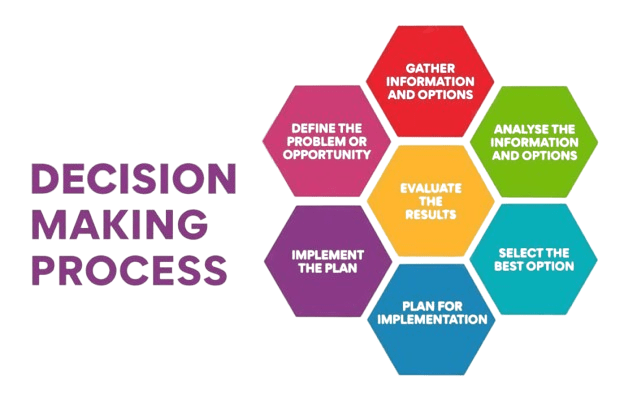
In sectors like finance, healthcare, retail, and manufacturing, predictive analytics is now a core capability for staying relevant and profitable.
Interested in Obtaining Your Data Science Certificate? View The Data Science Online Training Offered By ACTE Right Now!
Predictive Modeling Overview
Building mathematical models that can spot connections in historical data to forecast future outcomes is at the heart of predictive modeling. It all kicks off with data collection, where relevant datasets are gathered from both internal and external sources. Next up is data preparation, which involves cleaning, transforming, and selecting the right features for modeling. After that, we move on to model selection, where we pick the most suitable algorithms based on the specific characteristics of the problem at hand. The selected model is then trained on labeled data to uncover hidden patterns. Once training is complete, we validate the model by checking its accuracy against unseen data.
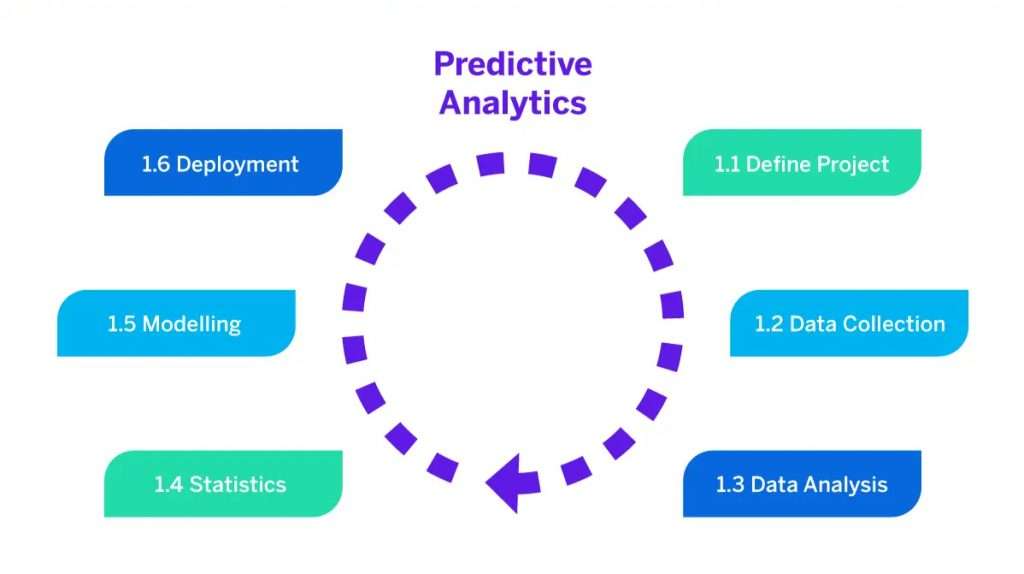
After validation, it gets integrated into business processes to make real-time predictions. Ongoing monitoring is essential to evaluate the model’s performance and make updates when needed. Common techniques used in predictive modeling include regression, classification, clustering, and time series analysis, each tailored for different types of prediction challenges.
To Explore Data Science in Depth, Check Out Our Comprehensive Data Science Online Training To Gain Insights From Our Experts!
Regression Analysis
Regression Analysis is a fundamental predictive analytics technique used to estimate the relationship between a dependent variable and one or more independent variables. It answers questions like: How does a change in one factor influence an outcome? To master regression and other core analytical techniques, explore Become a Data Analyst a step-by-step guide that covers essential skills, tools, and career pathways for aspiring data professionals.
- Decision Trees: Simple tree-like models that split data based on feature values.
- Random Forest: An ensemble of decision trees to improve accuracy.
- Support Vector Machines (SVM): Finds the best boundary separating classes.
- Naive Bayes: Uses probabilistic models based on Bayes’ theorem.
- Neural Networks: Inspired by biological brains, capable of handling complex patterns.
Classification Techniques
Classification involves categorizing data into predefined classes or groups. It is a type of supervised learning where the output variable is categorical. To master classification techniques and apply them using tools like Python, R, and machine learning libraries, explore Data Science Training a hands-on program that covers algorithm selection, model evaluation, and real-world implementation of supervised learning methods.
Common classification algorithms include:
- Decision Trees: Simple tree-like models that split data based on feature values.
- Random Forest: An ensemble of decision trees to improve accuracy.
- Support Vector Machines (SVM): Finds the best boundary separating classes.
- Support Vector Machines (SVM): Finds the best boundary separating classes.
- Neural Networks: Inspired by biological brains, capable of handling complex patterns.
Classification is used for fraud detection, customer segmentation, spam filtering, and medical diagnosis.
Gain Your Master’s Certification in Data Science Training by Enrolling in Our Data Science Master Program Training Course Now!
Time Series Forecasting
Time series forecasting analyzes data points collected or recorded at regular time intervals to predict future values. It is vital for understanding trends, seasonality, and cyclical patterns. To explore how time series fits into broader analytical frameworks and compare its use across disciplines, explore Data Science vs Business Analytics a comparative guide that highlights key distinctions in methodology, tools, and career applications between these two data-driven domains.
Popular forecasting models include:
- ARIMA (AutoRegressive Integrated Moving Average): A widely used model for stationary time series.
- Exponential Smoothing: Weights recent observations more heavily.
- Support Vector Machines (SVM): Finds the best boundary separating classes.
- Prophet: Developed by Facebook, ideal for business forecasting with seasonality.
- LSTM (Long Short-Term Memory): A type of recurrent neural network that captures long-term dependencies.
Applications include stock price prediction, sales forecasting, weather forecasting, and demand planning.
Are You Preparing for Data Science Jobs? Check Out ACTE’s Data Science Interview Questions and Answers to Boost Your Preparation!
Data Requirements & Preprocessing
The effectiveness of predictive analytics depends significantly on the quality and amount of data. The data must satisfy a number of crucial criteria for successful modeling. A large amount of data aids in improving the model’s robustness, and it should be pertinent to the particular issue being tackled. Variety is also crucial since integrating several data kinds, whether structured or unstructured, may provide more valuable insights. Data preprocessing is a crucial step in getting data ready for modeling. To understand how these foundational steps shape the analytics pipeline, explore What Is Data Analytics a beginner-friendly guide that explains core concepts like data types, preprocessing techniques, and how analytics drives smarter decision-making. Additionally, the velocity at which data is collected supports real-time prediction capabilities. It involves addressing missing values, fixing mistakes, and eliminating duplicates in order to clean the data. To promote consistency across characteristics, transformation methods like scaling or normalization are used. Creating new, significant variables that can enhance model performance is part of feature engineering. Encoding is used to transform categorical variables into numerical formats that are appropriate for analysis. Ultimately, the data is divided into training, validation, and test sets to allow for a thorough assessment of the model’s performance. For developing accurate and dependable predictive models, proper preprocessing is crucial.
Tools Used (SAS, R, Python, RapidMiner)
Several tools and platforms facilitate predictive analytics:
- SAS: A powerful statistical software suite with advanced analytics capabilities, popular in finance and healthcare.
- R: An open-source language designed for statistics and data visualization, with packages like caret and randomForest.
- Python: Widely adopted due to its flexibility and extensive libraries like scikit-learn, TensorFlow, pandas, and statsmodels.
- RapidMiner: A drag-and-drop platform offering end-to-end analytics workflows suitable for users with minimal coding skills.
Other notable tools include IBM SPSS, Microsoft Azure Machine Learning, and Google Cloud AI.
Applications in Industries (Finance, Healthcare, Retail)
Finance:
- Credit scoring models predict loan defaults.
- Fraud detection systems identify suspicious transactions.
- Algorithmic trading uses predictive models to optimize trades.
Healthcare:
- Predictive models forecast disease outbreaks.
- Patient risk scoring helps in personalized treatments.
- Hospital resource management optimizes bed occupancy and staffing.
Retail:
- Demand forecasting improves inventory management.
- Price optimization models maximize revenue.
- Customer segmentation drives personalized marketing.
Other sectors like manufacturing, telecommunications, and transportation also heavily rely on predictive analytics to optimize operations and enhance customer experience.
Challenges and Limitations
Despite its power, predictive analytics faces several challenges:
- Data Quality: Poor data leads to inaccurate models.
- Model Overfitting: Models may perform well on training data but poorly on new data.
- Interpretability: Complex models (e.g., deep learning) are often black boxes.
- Privacy Concerns: Use of personal data raises ethical and legal issues.
- Changing Environments: Models may become obsolete if underlying patterns shift.
- Computational Resources: Large datasets and complex models demand significant processing power.
Addressing these challenges requires continuous model evaluation, explainability tools, and robust data governance.
Predictive vs Descriptive Analytics
In order to understand what has happened, descriptive analytics aims to summarize historical data. Examples include analyzing website traffic or displaying sales data. By using patterns in historical data to forecast future events, predictive analytics, on the other hand, goes one step further. To understand how SAS enables this through advanced statistical modeling, machine learning, and data mining techniques, explore What Is SAS Analytics a detailed guide that explains SAS’s role in predictive analytics, its enterprise applications, and how it empowers data-driven decision-making across industries. Descriptive analytics answers “what happened?” and predictive analytics answers “what will happen next?” The two approaches complement each other well since predictive analytics uses the insights from descriptive analytics to generate accurate forecasts.
Predictive analytics has a bright future, thanks to numerous technological developments and emerging trends. The creation of more advanced models that can learn and adapt continuously is being driven by advancements in AI and machine learning. Predictive analytics is becoming more accessible to a larger variety of users thanks to automation, especially via automated machine learning (AutoML). Streaming data is facilitating real-time analytics, which in turn enables quicker reactions and immediate predictions. The integration of predictive analytics with the Internet of Things (IoT) is also creating new opportunities because sensor data generates new applications across a range of sectors. To master these technologies and apply them across industries, explore Data Science Training a future-ready program that covers AutoML, real-time data pipelines, and IoT-driven analytics for predictive decision-making. Model choices are becoming more understandable to users due to an increasing focus on explainable AI, which also enhances trust and transparency. Furthermore, edge computing is accelerating decision-making by allowing predictions to be made nearer to the data source. Predictive analytics is poised to become a fundamental component of routine decision-making in both business and society due to the increasing volume of data and improved computational power. Future of Predictive Analytics


